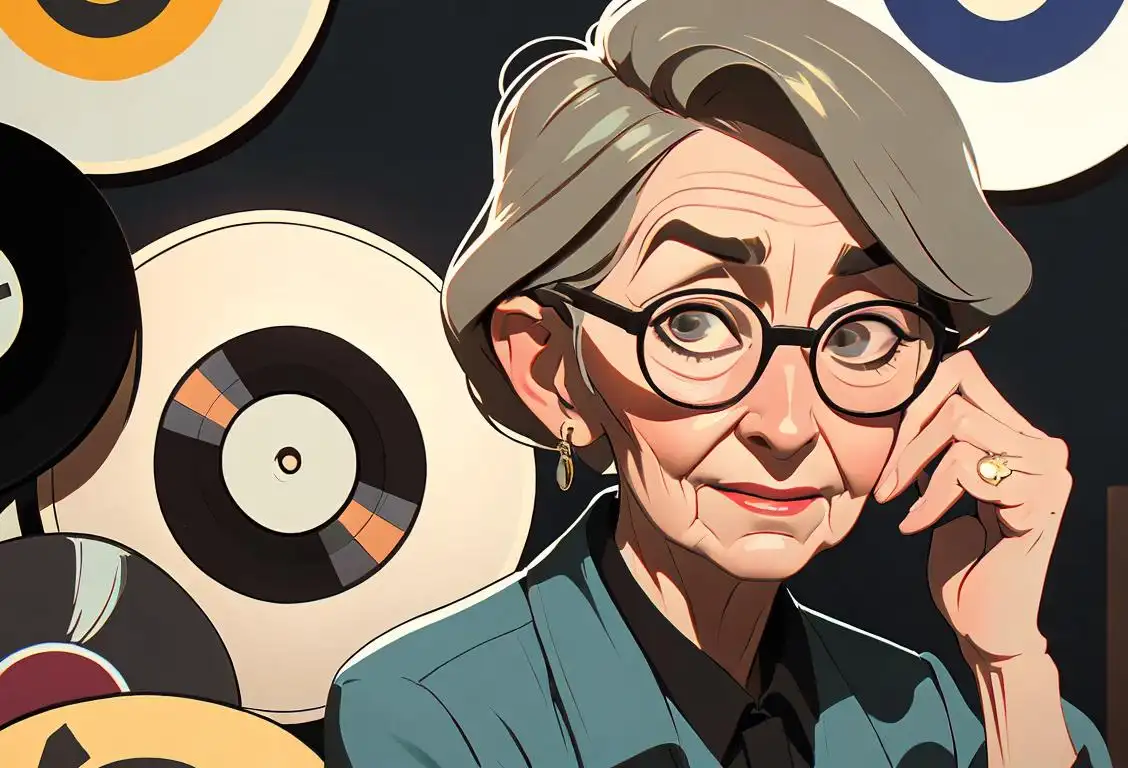National Coming Our Day

Are you ready to celebrate National Coming Out Day? Grab your rainbows, dancing shoes, and a whole lot of pride because this is a day of love, acceptance, and self-expression!
When is Coming Our Day?
It's national coming our day on the 11th October.
What is National Coming Out Day?
National Coming Out Day is celebrated annually on October 11th to support and recognize the courage of LGBTQ+ individuals who have come out and to raise awareness about the importance of LGBTQ+ visibility and equality. It's a day to honor and celebrate the stories of those who have embraced their true selves and to provide a supportive environment for individuals who may still be hiding their identity.
This day is not just about coming out to others, but also about coming out to yourself, accepting who you are, and living your life authentically. It's a reminder that love is love, and everyone deserves to be respected and celebrated for who they are.
The Internet's Role
The Internet has played a vital role in the LGBTQ+ community's ability to connect, find support, and share their stories. Online platforms have provided safe spaces where individuals can seek guidance, share their experiences, and find comfort in knowing that they are not alone. From coming out stories to supportive communities, the Internet has revolutionized the coming out process and made it easier for people to access resources and connect with others who share similar journeys.
Social media platforms, in particular, have allowed individuals to express their pride, connect with LGBTQ+ influencers, and join virtual events and discussions. The Internet has made it possible for LGBTQ+ voices to be heard on a global scale, reaching people who may be struggling with their own identity or allies who want to show their support.
Celebrating National Coming Out Day
On National Coming Out Day, people from all walks of life come together to show their support and solidarity with the LGBTQ+ community. Here are some ways you can celebrate:
- Share Your Story: If you feel comfortable, share your coming out story on social media or with friends and loved ones. Celebrate how far you've come and inspire others with your bravery.
- Wear Your Pride: Sport your favorite rainbow-themed attire, accessories, or even a pride flag to show your support and solidarity.
- Attend Events: Look for local events or virtual gatherings organized to celebrate National Coming Out Day. These events often feature speakers, workshops, and activities that promote LGBTQ+ acceptance and equality.
- Support LGBTQ+ Organizations: Consider making a donation or volunteering your time to LGBTQ+ organizations that provide resources, support, and advocacy for the community.
- Spread Awareness: Use your voice to educate others about the importance of LGBTQ+ visibility and equality. Share informative posts on social media or engage in respectful conversations with those who may not be familiar with the struggles faced by the community.
Did You Know?
Did you know that the first National Coming Out Day was observed on October 11, 1988? This day holds historical significance as a milestone in the fight for LGBTQ+ rights and acceptance.
History behind the term 'Coming Our'
1960
Emergence in African-American Vernacular English (AAVE)
The term 'coming out' first emerged in African-American Vernacular English (AAVE) in the 1960s. It was used as a slang expression to describe the process of revealing one's true self or identity. In the AAVE community, 'coming out' referred to openly acknowledging one's sexual orientation, typically associated with someone identifying as gay or lesbian.
1980
Coined term: Coming Out
The term 'coming out' was first coined in the early 1980s to describe the process of openly acknowledging one's non-heterosexual identity. It quickly gained popularity within the LGBTQ+ community as a way to express personal awareness and acceptance of one's sexual orientation or gender identity, often followed by sharing this with others, such as friends, family, or the public.
1970
Emergence of counterculture
The term 'coming out' originated in the early 1970s during the emergence of the counterculture movement. This movement encompassed various social, political, and cultural shifts in society, including the LGBTQ+ liberation movement. 'Coming out' referred to the process of revealing one's non-heterosexual or non-cisgender identity to others, typically friends, family, or the public.
1920
Emergence of the term
In the 1920s, the term 'coming out' started to gain popularity in the United States. Originally used in reference to debutante balls where young women made their formal debut into high society, it gradually began to be used more broadly to describe the act of introducing oneself to the public.
1969
Stonewall Riots and LGBT Rights Movement
The Stonewall Riots in June 1969 marked a turning point in the LGBT rights movement. As individuals fought back against police raids at the Stonewall Inn, a gay bar in New York City, the incident ignited a wave of activism. The term 'coming out' became more widely used within the LGBT community as a means of self-acceptance and challenging societal norms.
1970
Emergence of LGBTQ+ Activism
The 1970s marked a significant period of LGBTQ+ activism and advocacy for equal rights. With the Stonewall Riots in 1969 acting as a catalyst, LGBTQ+ individuals began to find their voice and fight against discrimination and oppression. As the movement gained momentum, the need for a term that encompassed the process of self-disclosure and visibility arose, leading to the eventual popularity of 'coming out'.
1960
Shift in meaning
During the 1960s, the term 'coming out' underwent a significant shift in meaning within the LGBTQ+ community. It became associated with individuals revealing their sexual orientation or gender identity to others. This transformative period in history brought the term into the spotlight and forever changed its cultural significance.
1988
Recognition of National Coming Out Day
In 1988, the Human Rights Campaign, a prominent LGBTQ+ advocacy organization, designated October 11th as National Coming Out Day. The purpose of this day was to raise awareness about the importance of coming out and to support those who choose to do so. National Coming Out Day has since been celebrated annually, providing a platform for LGBTQ+ individuals to share their stories and experiences.
1970
Gay Liberation Movement
The 1970s marked a pivotal moment for the LGBTQ+ community, as it witnessed the rise of the Gay Liberation Movement. 'Coming out' became a powerful expression of self-acceptance and pride. Activists, particularly in LGBTQ+ organizing, encouraged individuals to come out of the closet, challenging societal norms and advocating for equality.
1950
Shift in Psychiatric Perspectives
During the mid-20th century, there was a shift in psychiatric perspectives towards homosexuality. Prior to this time, being gay was classified as a mental disorder, leading many individuals to suppress their true identities out of fear of societal judgment and medical repercussions. The changing understanding of homosexuality as a natural variation of human sexuality provided a foundation for individuals to embrace their true selves and 'come out'.
1970
National Coming Out Day
In 1970, the first National Coming Out Day was observed on October 11th. The day was initially created in the United States as a way to raise awareness about the challenges faced by the LGBT community and to encourage individuals to share their true selves with others. National Coming Out Day has since become an annual celebration and a symbol of LGBTQ+ visibility and pride worldwide.
1990s
Mainstream usage and cultural impact
During the 1990s, the term 'coming out' gained widespread recognition and usage beyond LGBTQ+ circles. It began to encompass not only sexual orientation or gender identity but also the disclosure of any personal truth or secret. The concept of 'coming out' became a metaphor for honesty, embracing one's true self, and breaking free from societal expectations or norms.
1924
Hirschfeld's Institute for Sexual Science
In 1924, German physician and sexologist Magnus Hirschfeld established the Institute for Sexual Science in Berlin. The institute played a crucial role in supporting and researching sexuality, including homosexuality, at a time when it faced harsh societal condemnation and legal persecution. Hirschfeld's work emphasized the importance of self-acceptance and living authentically, laying the groundwork for the concept of 'coming out'.
1990
Pop culture prominence
By the 1990s, 'coming out' had entered mainstream popular culture, thanks in part to notable public figures who shared their experiences. This era saw influential celebrities embracing their sexual orientations and discussing their personal journeys openly, thereby further normalizing and expanding the concept of 'coming out'.
2005
Online communities and digital coming out
With the rise of online communities and social media platforms, the process of 'coming out' experienced a new dimension. The internet provided a space for individuals to share their stories, seek support, and connect with like-minded people. Digital platforms became instrumental in facilitating coming out experiences across diverse identities, thereby leading to a more inclusive understanding of the term.
1990
Wider Acceptance and Diversity in Coming Out Stories
Throughout the 1990s, there was increasing visibility and acceptance of diverse identities within the 'coming out' experience. The term expanded beyond the realm of sexual orientation to include the acknowledgment of gender identity, transgender individuals, and coming out as bisexual. This shift reflected a growing understanding of the complexity of personal identity and the importance of inclusion.
2009
Coming Out Day's Global Reach
National Coming Out Day continued to gain international recognition and prominence. Organizations and individuals around the world participated in events, workshops, and public discussions to promote understanding, acceptance, and support for LGBTQ+ individuals. The term 'coming out' became a unifying expression across cultures, languages, and borders in the ongoing pursuit of equal rights and social change.
19th Century
Emergence of LGBTQ+ Networks
Throughout the 19th century, LGBTQ+ communities began to form networks and develop a sense of belonging. These networks provided a safe space for individuals to express their true identities and find support within a marginalized community. This sense of community would later become integral to the 'coming out' process, as individuals sought guidance and understanding from others who shared similar experiences.
Present
Continued relevance
Today, 'coming out' remains an important and empowering aspect of LGBTQ+ identity. It serves as a means for individuals to affirm their true selves, fostering understanding, acceptance, and support from both the LGBTQ+ community and society at large. The term has transcended its origins to become emblematic of personal liberation and societal progress.
Ancient Times
Historical Awareness of Same-Sex Relationships
While the term 'coming out' might be relatively modern, same-sex relationships and non-binary gender identities have been a part of human history for centuries. Various ancient cultures, such as the Greeks and Romans, recognized and even celebrated same-sex love and relationships. These historical precedents remind us that the language of 'coming out' is a recent development, but the experiences and diversity it represents have deep roots in human civilization.
Did you know?
Did you know that the first National Coming Out Day was observed on October 11, 1988? This day holds historical significance as a milestone in the fight for LGBTQ+ rights and acceptance.Tagged
romance awareness fun loved ones rememberanceFirst identified
11th October 2016Most mentioned on
11th October 2019Total mentions
62Other days
Believe Day
Seniors Day
Family Day
One Day
Boyf Day
Opposite Day
Do Something Nice Day
Happiness Day
Action Day
Girlfriend Boyfriend Day









